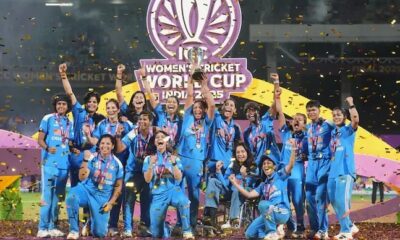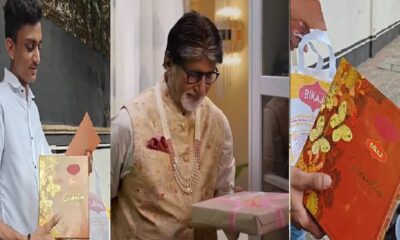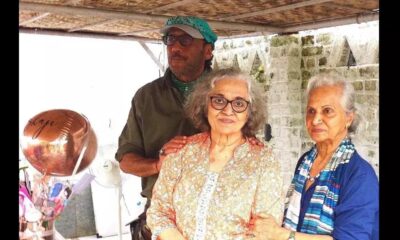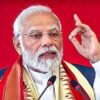“The Kerala Story: A Review:
“The Kerala Story: A Review:
Reviewing a film is
in many aspects is standpoint.
If one honestly gets into reviewing a film, it will script history that will judge a film best particularly with due respect to the intent of a filmmaker and the authenticity
of their claims.
Coming to Vipul Amrutlal Shah’s controversy ridden film
“The Kerala Story”, it has been headlining for a while now. Although, the makers have time and again defended their work, the only way to judge this film was by watching it. Featuring Adah Sharma, Yogita Bihani, Sonia Bilani and Siddhi Idnani, the film spanning two hours long is more or less engaging throughout.
The Sudipto Sen directorial doesn’t waste much time in getting to the point. Rather than following a linear narrative, Sen skillfully chooses to go back and forth in time, this way, he succeeds in garnering the viewer’s unfaltering attention.
In one moment you are amidst Kerala’s lush greenery and the very next, you are transported to barren nauseating terrains stretching out into oblivion.
It is hard to review a film.without delving into the sensitive aspects of what the film aims to convey. There are four women at the helm of affairs. Of them, two are Hindus, one a practicing Christian and one Muslim.
Adah Sharma as Shalini makes the most of this opportunity as a gullible college student who turns into an indoctrinated victim. Her transformation from Shalini (Hindu) to Fatima (Muslim) sees her undergo a massive adulterated change yet she retains a bit of her innocence throughout. Following a string of unsuccessful attempts at garnering the attention of the Hindi filmgoers, this performance might stand out in her filmography. Sonia Balain as Asifa is most audacious of the lot. Yogita Bihani as Nimah and Siddhi Idnani as Geetanjali complete the list of friends around whom the entire story revolves.
Sen’s screenplay largely concerns itself with how the alleged entrapment of Hindu girls work. For those unversed the term ‘love jihad’ was first used by the Catholic Church in Kerala. He blames deracination for their predicament. He seems to suggest that atheists and Hindus, who have no particular interest in their religion, tend to get radicalized faster that those who are practicing believers. This comes across in two instances, but more vividly when one of the characters blames her father for teaching her about “foreign ideas like communism” before educating her about her own culture and religion.
As the satanic design unfolds, the portrayal of the parents as mere helpless bystanders only adds to the agony. There are scenes of graphic violence that perturbs the viewers. The performances become the victim of a few liberties. Hindi spoken by the characters is exponentially more than what it is in Kerala. The intent here is to make the audience understand what is being said. However, this attempt at a peculiar concoction of Hindi infused in lengthy Malayalam dialogues seems forced. Somehow, in places, the characters are able to get the accent right but the language spoken by them comes across as grossly unconvincing. Perhaps those who do not speak Malayalam will not even come to know of it.
News input KV Raman


















